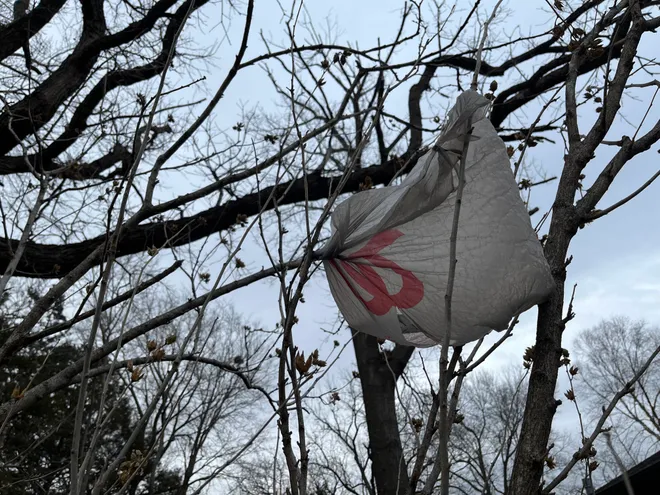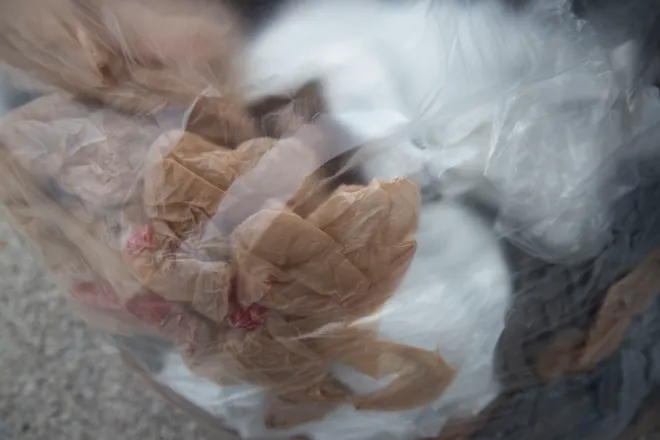Plastic bag bans have spread across the country. Sometimes they backfire.
The idea is simple: Reduce plastic waste by requiring shoppers to bring their own reusable bags.
The reality is messy. Plastic bag bans have spread across the nation, but some data suggests that switching to more durable, multi-use bags creates some new problems – and in some cases means more, not less, plastic being used.
Given how few single-use plastic bags are recycled – just 13% – cutting plastic bag use could have a big environmental impact.
Now the nation is split on what to do: Strengthen bans or oppose them entirely. Some areas are closing loopholes and making rules stricter — Last week legislation was introduced in California to double down on bans. Meanwhile, 20 states have banned the bans.
What prompted plastic bag bans in the first place?
It’s all about a fight over plastic pollution, a problem that’s grown to epic proportions since the 1950s.
Thin, single-use plastic bags were first developed in the 1960s in Europe. They only appeared in U.S. grocery stores in 1979, edging out paper bags because they were significantly cheaper for grocers. By the 2000s they were everywhere, including in the landscape, harming marine animals when they got in waterways.
Every material has an environmental impact but plastic is especially problematic, said Shelie Miller, professor of sustainable systems at the School for Environment Sustainability at the University of Michigan.
“It doesn’t break down in the environment and can cause significant ecological damage,” she said.
“When a plastic bag escapes into the environment, animals can see it as a food source and ingest it, it can cause entrapment and entanglement and there’s lots of questions about microplastics in the environment,” she said.
Concerned about the growing plastic pollution problem, the first non-compostable plastic bag ban went into effect in San Francisco in 2007. A California-wide law followed in 2016.
By 2023, California, Connecticut, Delaware, Hawaii, Maine, New Jersey, New York, Oregon, Vermont and Washington all had some form of statewide ban on single-use plastic bags. Colorado and Rhode Island were added to the list this year. About 500 cities and towns also have ordinances.
But there has been a backlash as well. As many as 20 states have passed laws banning any plastic bag bans at all, under the argument that they preempt local control. The conservative American Legislative Exchange Council created a model bill for preemptively banning such bans in 2015.

Bans work, but not perfectly
Where they’re in place, the bans typically help but aren’t as successful as proponents had hoped, in part because of compromises written into the laws to make them palatable to shoppers and the plastics industry.
Which isn’t to say they don’t work. Areas with bans can eliminate almost 300 single-use plastic bags per person per year according to a study released last month by Environment America.
According to the report, bans in five states and cities covering 12 million people have cut single-use plastic bag consumption by about 6 billion bags per year.
In the six months after California passed its bag ban, which ended handing out thin plastic bags for free and required grocers to charge for paper and thicker plastic bags, there was an 85% reduction in the number of plastic bags to customers and 61% in paper bags, according to a 2019 report to the legislature on the program.

But the bans haven’t entirely dealt with the problem. In some places with bans, the amount of plastic bag waste is actually increasing.
In California for example, this happens because of what politicians are calling a "loophole" in the original bill, which allowed the sale of thicker, reusable plastic bags at the checkout stand.
“The plastics industry has figured out a way of producing and selling bags in places where there are these bans,” said Celeste Meiffren-Swango. She is co-author of an Environment America report on plastic bag bans published last month.
What seems to happen is that many consumers simply treat the thicker bags, which were designed to be reused, as just as disposable as the thin film bags that were available before.
A bag that’s double the weight “has double the impact, unless it is reused more times or used to carry more goods,” a major United Nations environmental report on plastic bags noted.
In New Jersey, a study funded by plastic bag manufacturers found that while the number of single-use plastic bags sold declined by 60% after a bag ban went into effect in 2015, the number of alternative plastic bags, including the stiffer rectangular kind with handles that are often sold at grocery stores at checkout now, increased.
The same thing has happened in California. The year its bag ban was passed, Californians threw away 157,385 tons of plastic bags. In 2022 that had increased to 231,072 tons, according to the report.
A new California law, proposed last week, would eliminate the option of getting the thicker, theoretically renewable, bags at stores. Instead, stores can sell 100% recycled plastic bags or let consumers use reusable bags.

Is that reusable bag good for the planet? Depends on how many times you reuse it.
Research by the United Nations Environment Program shows that simply reusing bags enough times significantly lowers their environmental impact.
It doesn’t take a lot. “If a bag is used for shopping twice instead of once, it has only half the environmental impact per shopping round,” the UN report said.
- 4-8 times for paper bags
- 5-10 times for thicker plastic bags made of high-density polyethylene
- 10-20 times for durable “tote” style bags sold at grocery stores
- 50-150 times for cotton bags
“We want customers to buy a set of reusable bags and just use them until they fall apart," said Miller.
Sometimes you don’t need a bag at all, said Meiffren-Swango.
“If I stop in at the grocery store and forgot my reusable bags, which I’ll admit happens relatively often, and I’m just grabbing a few things, I’ll say no bag for me and just carry my groceries to my car,” she said. “I’ve even heard of people who take their grocery cart to their car and put them in the trunk.”
Disclaimer: The copyright of this article belongs to the original author. Reposting this article is solely for the purpose of information dissemination and does not constitute any investment advice. If there is any infringement, please contact us immediately. We will make corrections or deletions as necessary. Thank you.




